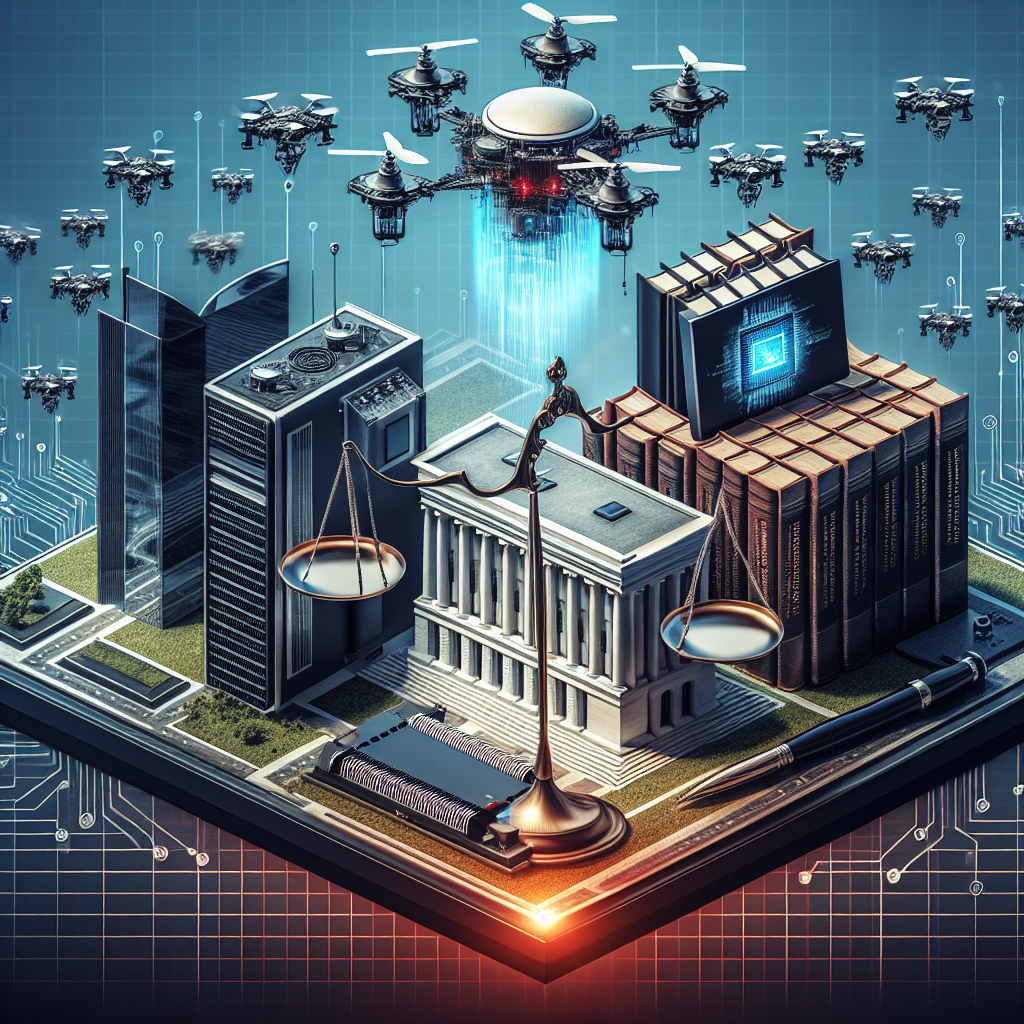In recent years, the use of artificial intelligence (AI) in government regulatory compliance and enforcement has been gaining traction. AI has the potential to revolutionize the way governments monitor and enforce regulations, making the process more efficient, effective, and transparent. This article will explore the various ways in which AI is being used in government regulatory compliance and enforcement, its benefits and challenges, as well as the potential future implications.
One of the key areas where AI is being used in government regulatory compliance and enforcement is in the analysis of large volumes of data. Governments collect vast amounts of data from various sources, including financial transactions, social media, and environmental sensors. AI algorithms can be used to sift through this data and identify patterns, anomalies, and potential violations of regulations. This can help government agencies to prioritize their resources and focus on areas where there is a higher likelihood of non-compliance.
Another important application of AI in regulatory compliance and enforcement is in the prediction of future violations. By analyzing historical data and using machine learning algorithms, government agencies can develop predictive models that can identify companies or individuals that are at a higher risk of violating regulations. This proactive approach can help agencies to prevent violations before they occur, saving time and resources in the long run.
AI can also be used to automate routine compliance tasks, such as monitoring and reporting. For example, AI-powered chatbots can answer queries from businesses and individuals about regulations, reducing the burden on government staff. Similarly, AI can be used to automate the process of collecting and analyzing compliance reports, making the process faster and more accurate.
One of the biggest benefits of using AI in government regulatory compliance and enforcement is its ability to improve transparency and accountability. AI algorithms are often more objective and consistent than human decision-makers, reducing the risk of bias and corruption. Additionally, AI can provide a clear audit trail of decisions and actions taken, making it easier for stakeholders to understand and challenge regulatory decisions.
Despite the many benefits of using AI in government regulatory compliance and enforcement, there are also some challenges and concerns that need to be addressed. One of the main challenges is the potential for AI algorithms to make mistakes or produce biased results. This can lead to incorrect enforcement decisions, unfair treatment of individuals or businesses, and a lack of accountability. Governments need to ensure that AI systems are transparent, explainable, and regularly audited to minimize the risk of errors and bias.
Another concern is the potential impact of AI on jobs in regulatory compliance and enforcement. As AI systems become more advanced, there is a risk that they could replace human workers, leading to job losses and social disruption. Governments need to carefully consider the impact of AI on the workforce and put in place measures to retrain and reskill workers who may be displaced by automation.
Overall, the use of AI in government regulatory compliance and enforcement has the potential to revolutionize the way regulations are monitored and enforced. By leveraging the power of AI algorithms, governments can improve efficiency, effectiveness, and transparency in regulatory compliance. However, it is essential for governments to address the challenges and concerns associated with AI to ensure that its benefits are maximized and its risks are minimized.
FAQs:
Q: How is AI being used in government regulatory compliance and enforcement?
A: AI is being used in various ways in government regulatory compliance and enforcement, including the analysis of large volumes of data, prediction of future violations, automation of routine tasks, and improvement of transparency and accountability.
Q: What are the benefits of using AI in regulatory compliance and enforcement?
A: The benefits of using AI in regulatory compliance and enforcement include improved efficiency, effectiveness, transparency, and accountability. AI can help government agencies to prioritize resources, prevent violations, automate tasks, and reduce bias and corruption.
Q: What are the challenges of using AI in regulatory compliance and enforcement?
A: Some of the challenges of using AI in regulatory compliance and enforcement include the potential for errors and bias in AI algorithms, the impact on jobs, and the need for transparency and accountability in AI systems.
Q: How can governments address the challenges of using AI in regulatory compliance and enforcement?
A: Governments can address the challenges of using AI in regulatory compliance and enforcement by ensuring that AI systems are transparent, explainable, and audited regularly. They can also put in place measures to retrain and reskill workers who may be displaced by automation.

